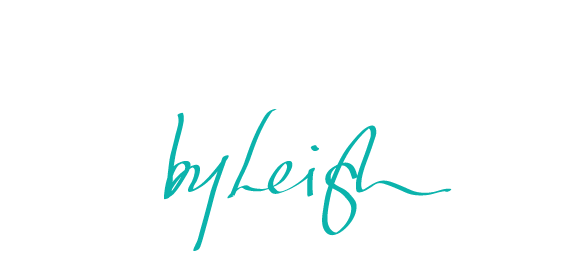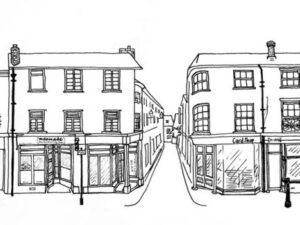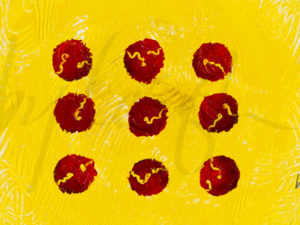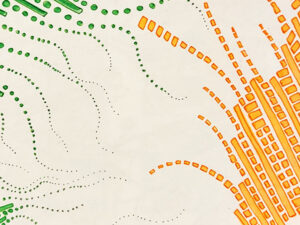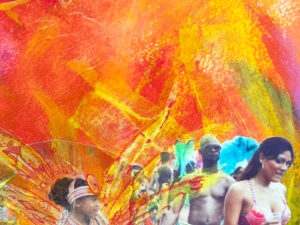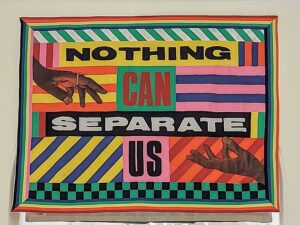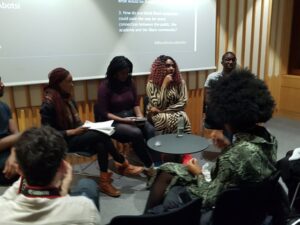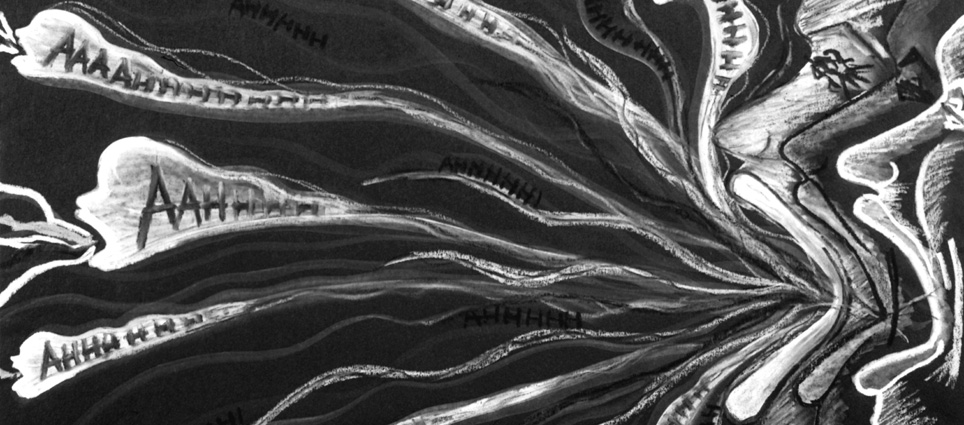
Featured Image: Ahhh Frustration by SLRoss
19 Dec 2019
Transcription and Transcription Analysis
Let me begin with – Oh My Sweet baby Jesus! Why does no one warn you about doing transcriptions for yourself. At this point in time I would like nothing more than to crawl under my duvet and shut my brain down but I need to do this reflective bit while it’s still fresh, even if I’m not.
I’ve just spent the last 8 days (barring interruptions like going to work and dealing with kids who are eager to do Christmas stuff), transcribing three interviews with a combined total time of 2hrs and 40 minutes. The last 2 days were spent trawling through them with a highlighter looking for answers to the key aspects to my question:
I have got as far as comparing the process maps and my brain has just given up. It will return to regular function tomorrow.
For now, apart from the obvious stress of such a process, I must confess that I *looks around to make sure no one is listening* I kind of enjoyed it! I loved seeing the answers begin to emerge, the process maps start to form, even if I had to scrap a few here and there as new information popped up. This is the information I’ve wanted to know and here it is coming at me.
The first transcript I did, I definitely had not done enough (read: any) research into transcription before starting. I thought, How hard could it be? Just listen and type. Ha! On behalf of professional transcribers all over the world, I slapped myself upside the head for you.
The first interview is rife with ums, ahs and ellipses, essentially a verbatim transcription (Transcribe.com, 2019) with syntax errors to kingdom come and beyond. It is the hardest type of transcription to do, which I would have known had I done my homework before getting three quarters of the way through Interview 2. Shoot me now! The upshot is that, unlike the first interview, the other two enjoy the cleaner basic transcription. Given the time constraints, I thought I’d leave the first transcription as is so the steep learning curve I embarked upon could be clearly demonstrated. Feel free to laugh!
Getting back to the analysis though, the categories I sought insight into were determined by the interviewees themselves, but these categories also appeared in some of my initial secondary research. For example, both JR (JR, 2011) and Alketa (Xhafa Mripa, 2017) talk about bringing art into public spaces to meet the people who they want to consume this art. That’s all about venue. As is this comment from Janine Francois (Francois, 2019).

Other categories arose from thinking through my action plan (pictured below) and interrogating my question. How would I know visitors were inspired to action? I would need to find a way to measure this? Thus, I needed to look into how other curators were evaluating their own success. At first, the People United report (Andrews et al., 2017) I found seemed excellent for this but given the small scope of this research project, their techniques turned out to be a bit too specific (e.g. scaled questions and control groups) for this stage in the process. They may be better suited to when I get a bit further down the curation process.
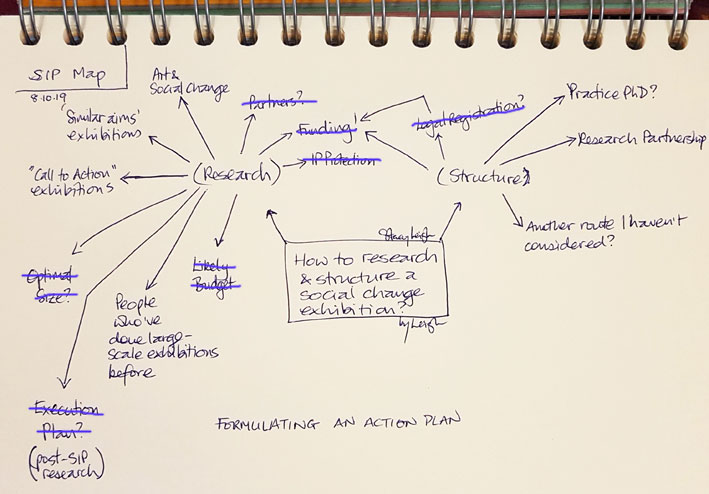
One more thing about transcripts before I go into the process maps I created from each curators’ experience – it’s about focus. I found I needed to remind myself that however interesting the information was, unless it directly addressed my question, I needed to ignore it… for now. To do this, I stuck this post-it up above my keyboard to help me stay on task. Before I went to highlight anything, I glanced up at the question and stayed on topic. So far so good.
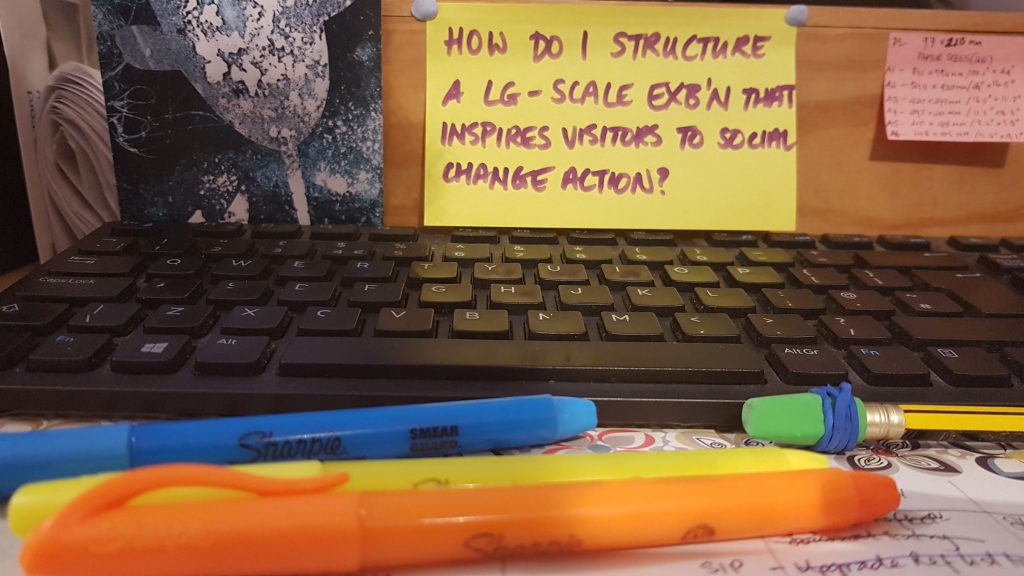
I did notice that I don’t have as much writing and highlighting on Curator 1’s interview. I don’t know if this is because I began analysing it first and was therefore more hesitant than later on when I was in full flow, or if it’s because as my first interview, I just wasn’t as on-point with my questions and so wasn’t able to really probe for the right answers. Remember, this is the interview that I didn’t have my categories listed so I could flow between them in any order while still being sure to check off each topic as I covered it. I suspect it’s a bit of both so I think this interview bears revisiting for further analysis, just to see if I missed anything.
I better get to those process maps.
—
References
Andrews, T., Bunting, C., Corri, T. and Fox, S. (2017). Changing the World through Arts and Kindness – Evidence from People United projects 2007-2017. Kent, UK: People United Publishing, pp.7–15.
Francois, J. (2019). Social Change Curation. [online]. 4 Dec. Available at: Workflow [Accessed 19 Dec. 2019].
JR (2011). Use art to turn the world inside out | JR. TED2011. Available at: https://youtu.be/0PAy1zBtTbw [Accessed 5 Nov. 2019].
Transcribe.com (2019). Basic & Verbatim – Transcribe.com. [online] Transcribe.com. Available at: https://www.transcribe.com/transcription-jobs-online/style-guide/basic-verbatim/ [Accessed 14 Dec. 2019].
Xhafa Mripa, A. (2017). Art as the catalyst for social change | Alketa Xhafa Mripa | TEDxTirana. YouTube. Available at: [Accessed 18 Nov. 2019].
